Miso glazed salmon has become an increasingly popular dish, marrying the umami flavors of Japanese cuisine with the rich taste of fresh salmon. This flavorful recipe combines sweet, salty, and savory elements to create a perfectly balanced meal. But what exactly is miso glazed salmon made of? Let’s take a closer look at the ingredients that make this dish special.
A Brief Overview of Miso Glazed Salmon
Miso glazed salmon features salmon fillets coated in a sweet and salty marinade called a miso glaze. This glaze is made from miso paste mixed with mirin, rice wine vinegar, soy sauce, ginger, garlic, and a touch of brown sugar or honey. The fish is baked or broiled so the glaze caramelizes, forming a tasty crust.
The miso adds a rich umami depth to complement the salmon’s natural oils and fattiness. When combined with the sweet and salty glaze the result is a brilliant interplay of flavors – sweet yet savory, rich yet tangy. Let’s explore the core components of this dish further.
Salmon – A Nutritious and Flavorful Fish
Salmon is the star ingredient, providing healthy fats and a texture that pairs perfectly with the miso glaze. There are several salmon varieties to choose from:
-
King salmon – The fattiest option, with a delicate flavor.
-
Sockeye salmon – Leaner with a deep red color and robust taste.
-
Atlantic salmon – A widely available farmed variety with a milder flavor
No matter which salmon you select, they all contain heart-healthy omega-3 fatty acids and have a naturally rich, fatty quality that works well with the miso glaze.
Miso Paste – A Japanese Seasoning Made from Fermented Soybeans
Miso paste is what gives this dish its name. This salty, umami-rich ingredient is made by fermenting soybeans and sometimes mixing in rice, barley, or other grains. The fermentation process can take anywhere from a few weeks to a few years!
There are a few common varieties:
-
White miso – Sweet and mild in flavor.
-
Red miso – Robust, salty, and deeper in flavor.
-
Mixed miso – A blend with a balanced flavor profile.
The miso paste adds a savory depth and hint of sweetness that pairs deliciously with the salmon’s richness.
Soy Sauce, Mirin & Rice Vinegar – Flavor Accents
To balance out the miso, the glaze also contains:
-
Soy sauce – For added saltiness and umami.
-
Mirin – A sweet Japanese rice wine that lends subtle sweetness.
-
Rice vinegar – Provides acidity to brighten the glaze.
These ingredients complement one another to create a perfectly balanced marinade.
Aromatics – Ginger, Garlic, & Scallions
Ginger, garlic, and scallions are often used to add aromatic flavor to the glaze.
-
Ginger – Adds a subtle spicy kick.
-
Garlic – Provides an earthy background flavor.
-
Scallions – Offer freshness and mild onion flavor.
When combined, these aromatics infuse the glaze with flavor depth without overpowering the salmon.
Sweetener – A Touch of Sweetness
A small amount of brown sugar, honey, or maple syrup balances the salty umami flavors in the glaze with subtle sweetness. This enhances the caramelization during cooking for a sticky, glossy texture.
To Sum It Up…
Miso glazed salmon brings together the lush fattiness of salmon with the complex sweet, salty, and umami notes of a miso glaze. It’s a simple recipe, but the fusion of Japanese and Western ingredients creates incredible depth of flavor.
The salmon provides a canvas for the miso paste, soy sauce, mirin, rice vinegar, aromatics, and touch of sweetness to shine. When roasted or broiled, the glaze caramelizes, forming a delicious crust on the fish.
This dish is healthy, easy to make, and full of flavor. The balance of tastes and textures is what makes miso glazed salmon so crave-worthy! Now that you know what it’s made of, it’s time to get cooking and experience this popular Japanese-inspired meal.
Frequently Asked Questions About Miso Glazed Salmon
Here are answers to some common questions about making and enjoying this popular dish:
What kind of salmon works best?
The fattier varieties like king or sockeye salmon work wonderfully, but any fresh salmon fillet will be delicious. The higher fat content helps the fish take on the miso glaze flavors.
Does the skin need to be removed?
You can cook miso salmon with or without the skin. The skin gets beautifully crispy and adds texture, but removing it is easy if you prefer skinless.
What’s the difference between white and red miso?
White miso has a sweet, mild taste, while red miso is more pungent, salty, and complex. Both work well, so choose your favorite!
How long should I marinate the fish?
At least 30 minutes to let the miso flavor penetrate, but overnight in the fridge is ideal. Any longer than 24 hours can make the salmon too salty.
What’s the best cooking method?
Broiling, grilling, baking, or pan searing all work excellently! Aim for medium doneness so it stays moist and tender.
What sides go well with it?
Steamed rice, soba noodles, roasted veggies, and miso soup are perfect accompaniments. The flavors of miso glazed salmon also pair well with salads or fresh green vegetables.
How do I store leftovers properly?
Refrigerate in an airtight container for up to 3 days. The glaze hardens when chilled, so gently reheat leftovers before serving.
Can I freeze miso glazed salmon?
Yes! Freeze the marinated raw salmon for up to 3 months. Thaw overnight in the fridge before cooking.
I hope these tips help you feel confident making miso glazed salmon at home. This flexible recipe is easy to customize to your tastes – enjoy!

How to Enjoy As A “Teishoku” Set Meal
Have you ever heard the term “teishoku” (定食)? It’s the Japanese term for “set meal” and is usually made up of 3 or more elements. The most common dishes that make up a teishoku set include:
- Main dish – usually grilled or fried meat or fish
- Rice – Japanese white rice is most common but brown rice or rice mixed with multi grains are also popular.
- Soup – miso soup is the classic option but other great options include tonjiru (pork miso soup), kenchinjiru (Japanese vegetable soup) or kaki-tamajiru (egg drop soup).
- Side dish – vegetables (boiled, stir fried etc), salad
- Tsukemono – Japanese pickles
Miso glazed salmon is a perfect dish for teishoku-style meals and can be served for lunch, dinner, or even breakfast! Each element comes together to make a very satisfying meal!
Teishoku is usually arranged in a specific order. I’ve made a guide for you below!
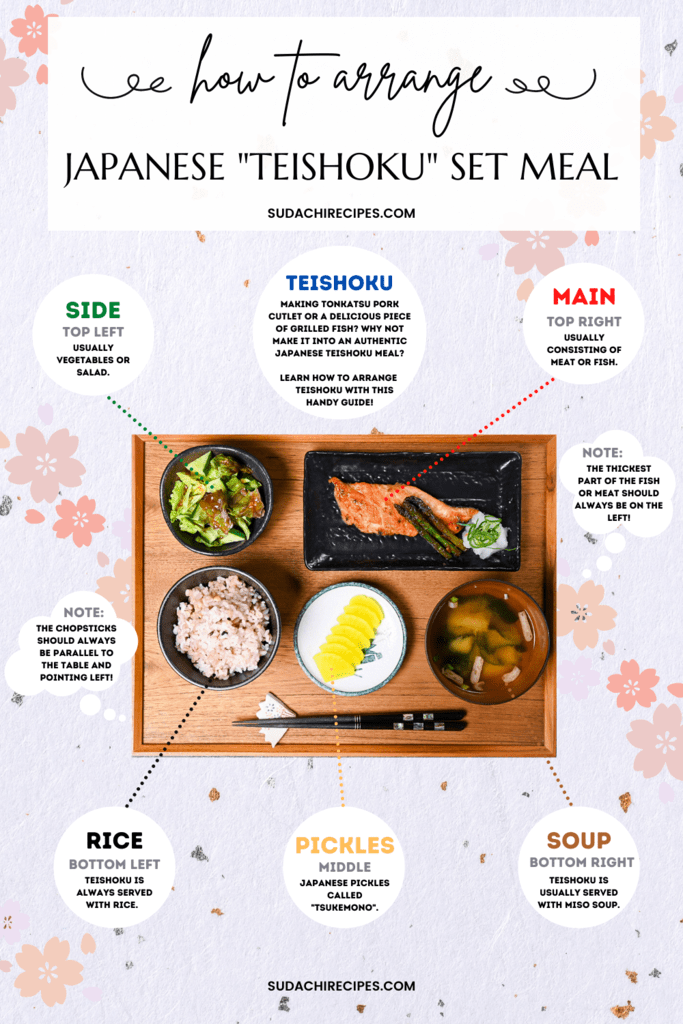
If you’re interested in making miso glazed salmon as part of a teishoku set, try out some of the recipes below to complete your meal!
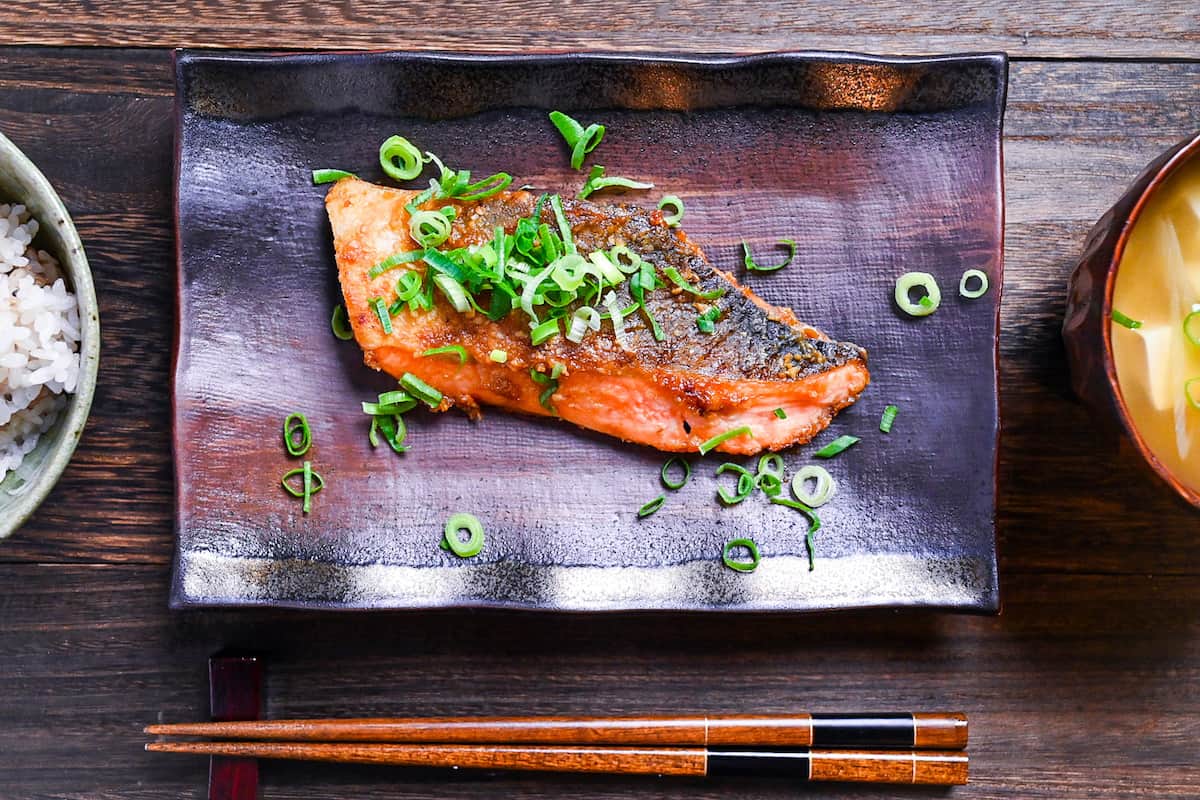
Sake in here works in three ways by eliminating fishy odors, tenderizing the meat, and adding a subtle umami flavor. Bu because this recipe only calls for a small amount, you can substitute it with dry white wine or sherry if you don’t have sake on hand.
Yes, Japanese dishes like this are often quite salty when eaten alone because they’re designed to be eaten with plain white rice. For example, we would typically take a small bite of this salmon along with a larger portion of plain rice. For a less salty version, try using less miso.
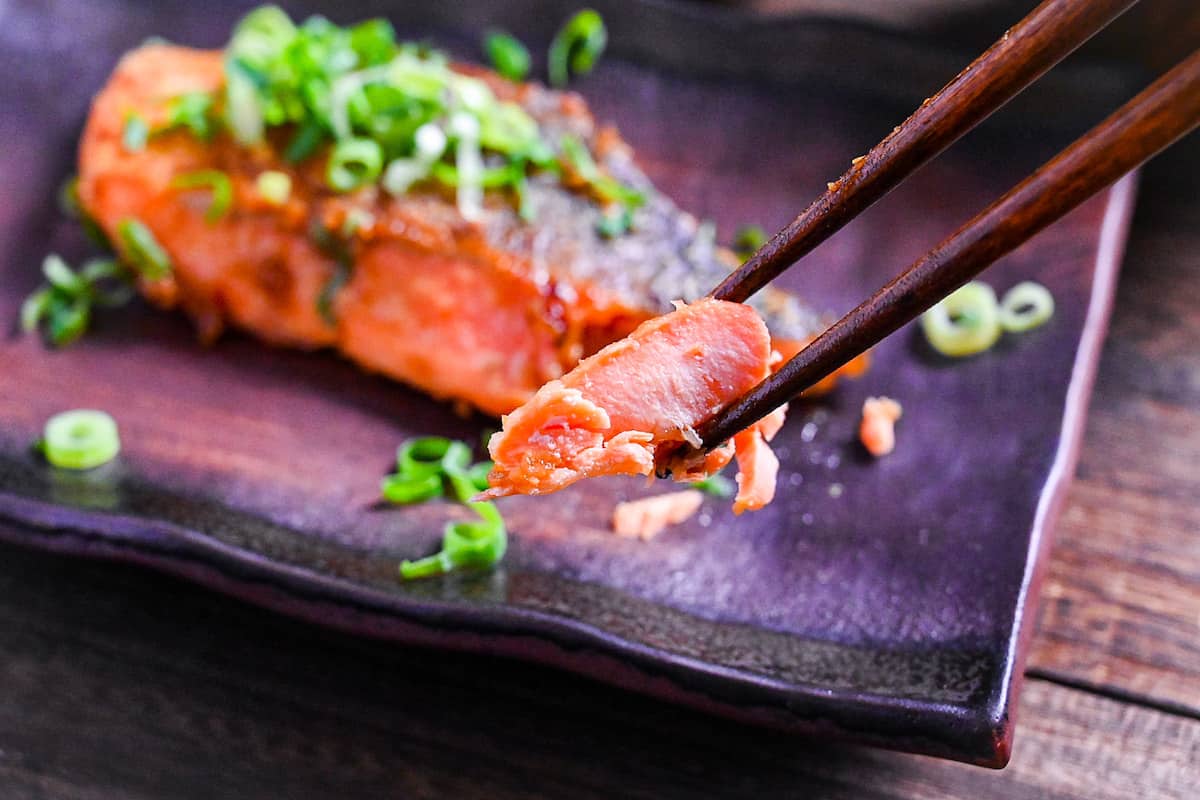
I hope you enjoy this Miso Glazed Salmon recipe! If you try it out, I’d really appreciate it if you could spare a moment to let me know what you thought by giving a review and star rating in the . It’s also helpful to share any adjustments you made to the recipe with our other readers. Thank you!
Visual Walkthrough & Tips
Here are my step-by-step instructions for how to make Miso Glazed Salmon at home. For ingredient quantities and simplified instructions, scroll down for the Printable Recipe Card below.
If you prefer to watch the process in action, check out my YouTube video of this recipe for a complete visual walkthrough!
Take a small bowl and mix the miso paste, sake, garlic paste, soy sauce, and light brown sugar together. Set it by the stove for later.
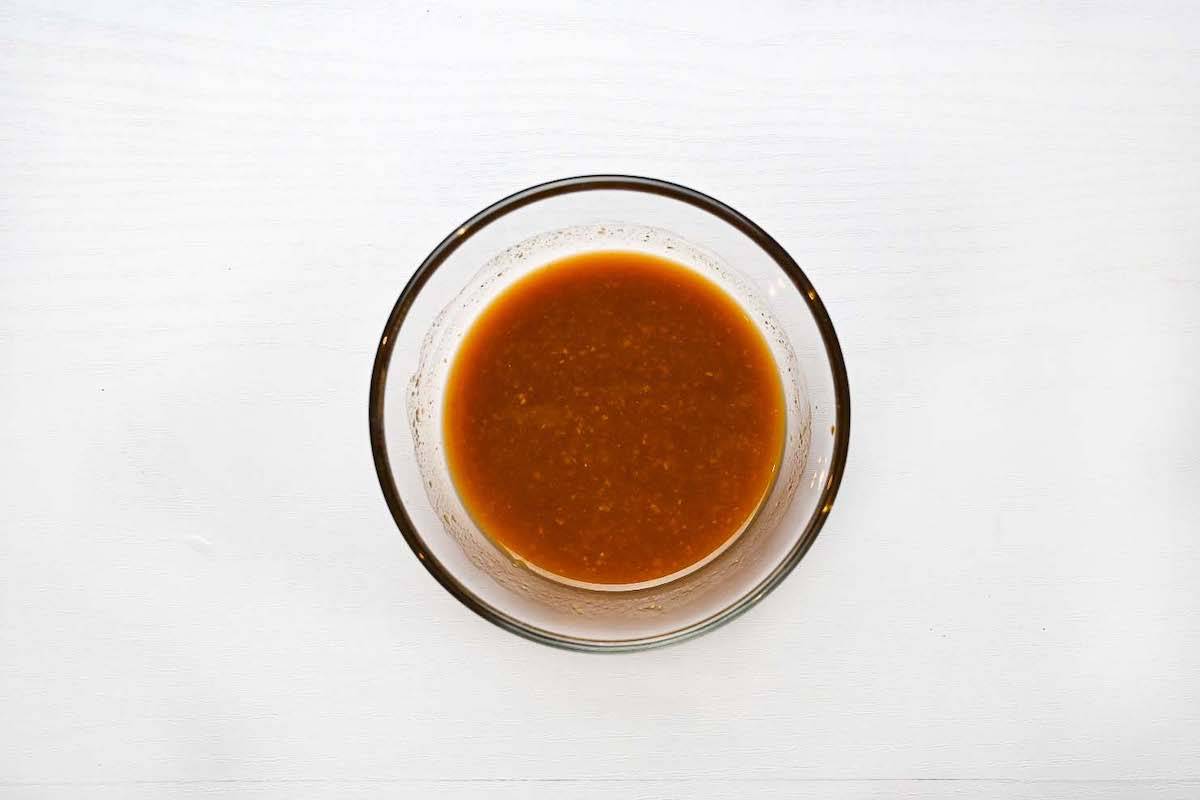
Start preheating your frying pan on a medium setting. While it preheats, you can prepare the salmon. First, wash the fillets with cold water and dry them thoroughly with kitchen paper.
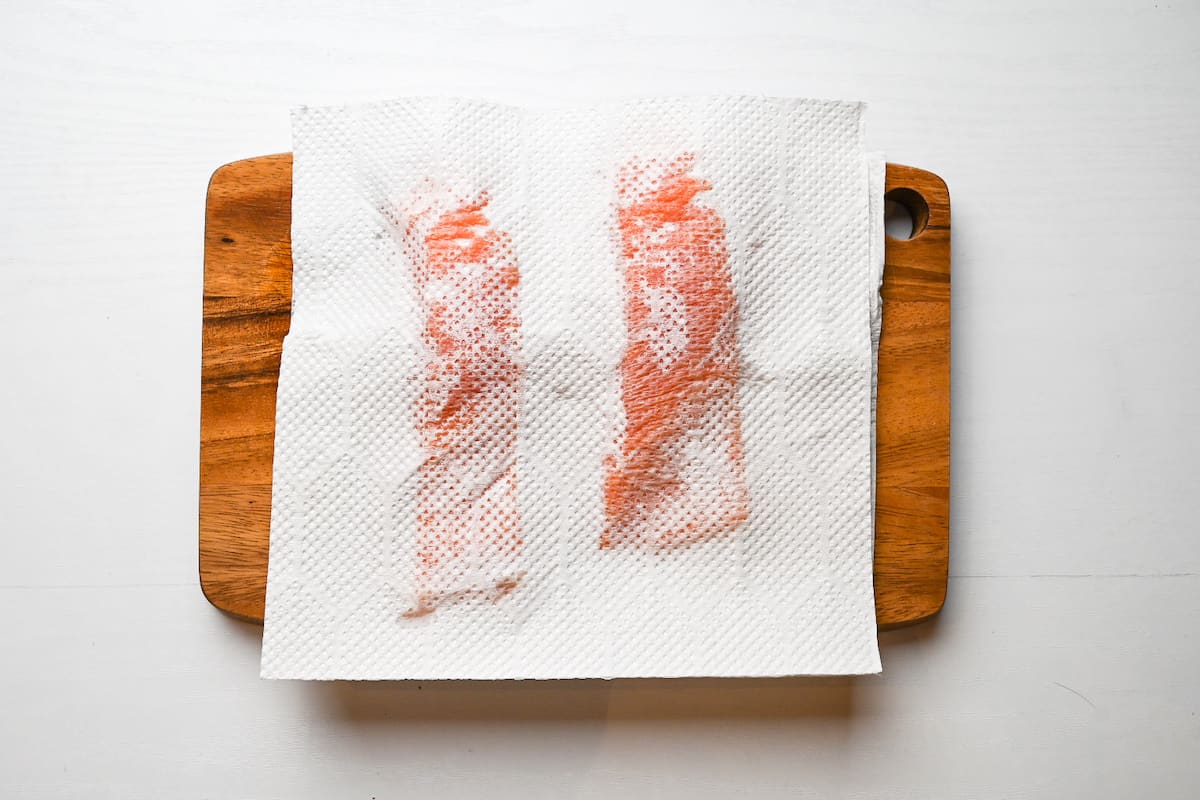
Once dry, sprinkle both sides with a pinch of salt.
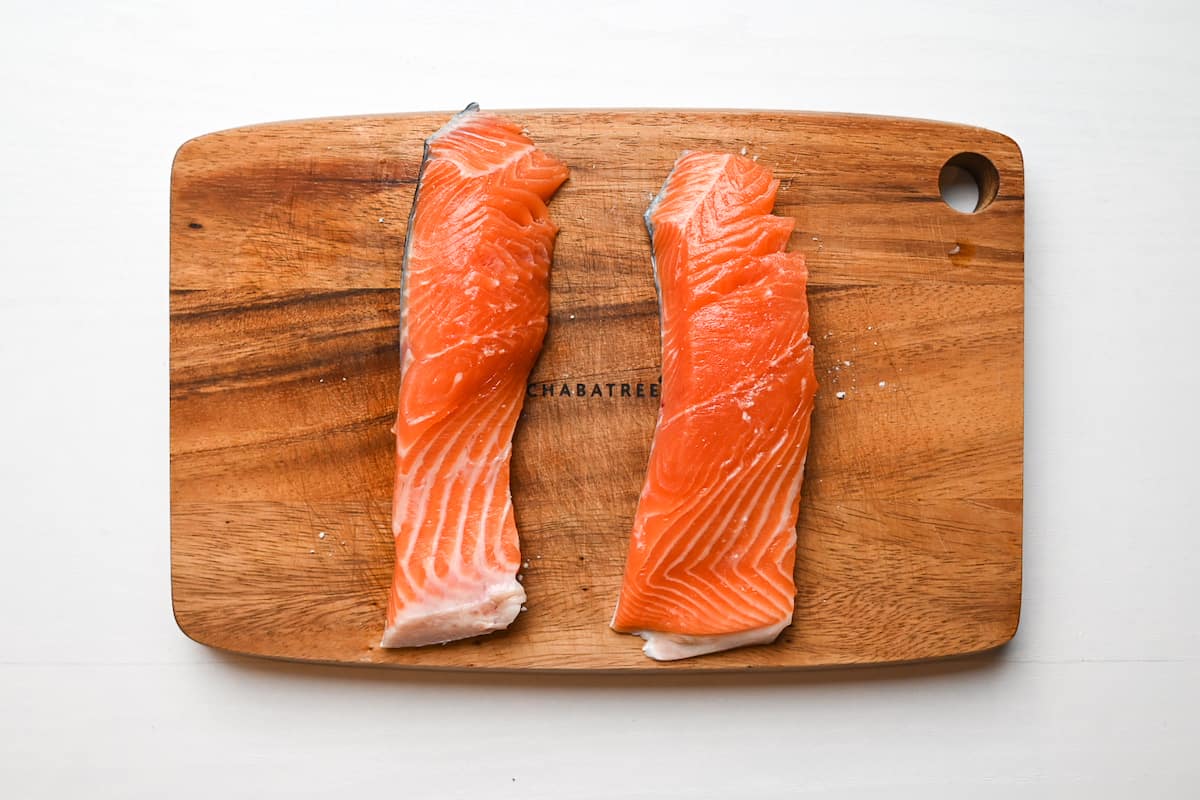
Sprinkle the salt from a height to help evenly distribute it.
Next, coat the surface of the salmon with a thin layer of potato starch. Not only is this going to make the surface of the salmon beautifully crispy, but it will also help the sauce stick.
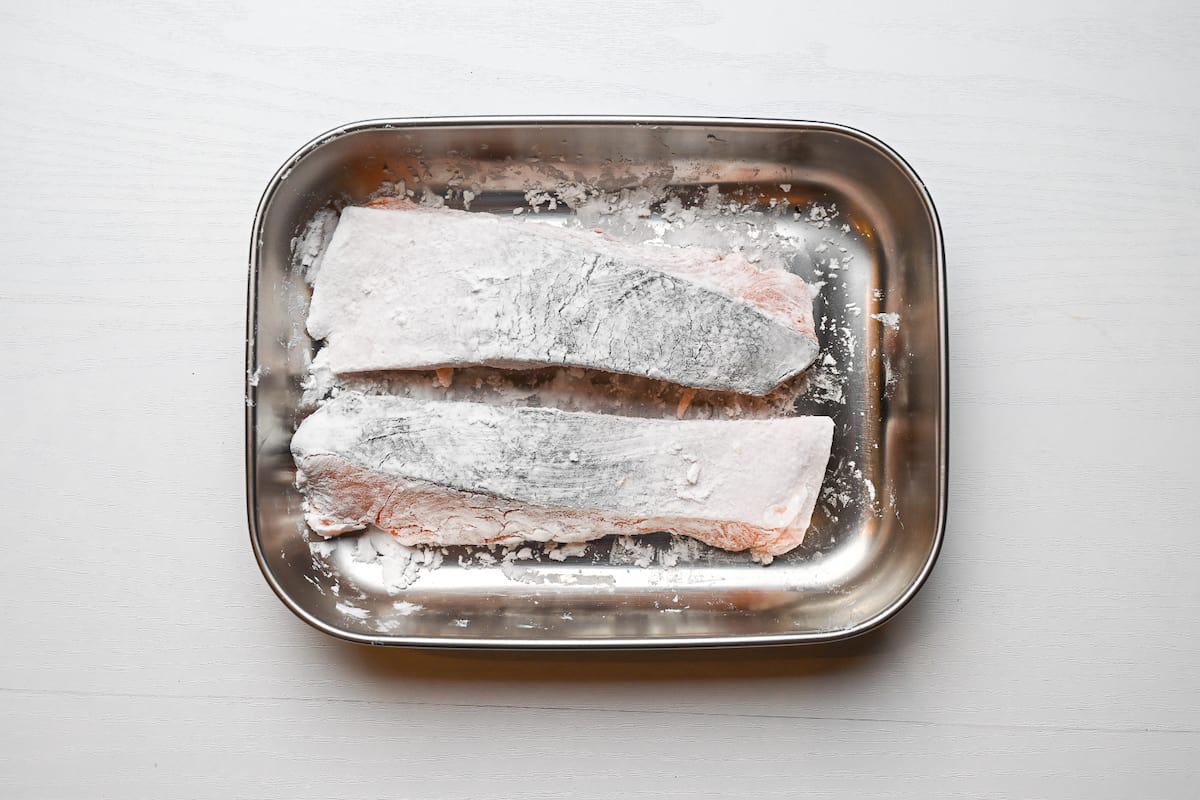
Once hot, add the sesame oil to the pan and swirl it around. Place the salmon fillets with the skin side facing down. Fry for 2 minutes on each side or until the salmon reaches an internal temperature of 52°C (125°F). (This may take a little longer for particularly thick fillets.)
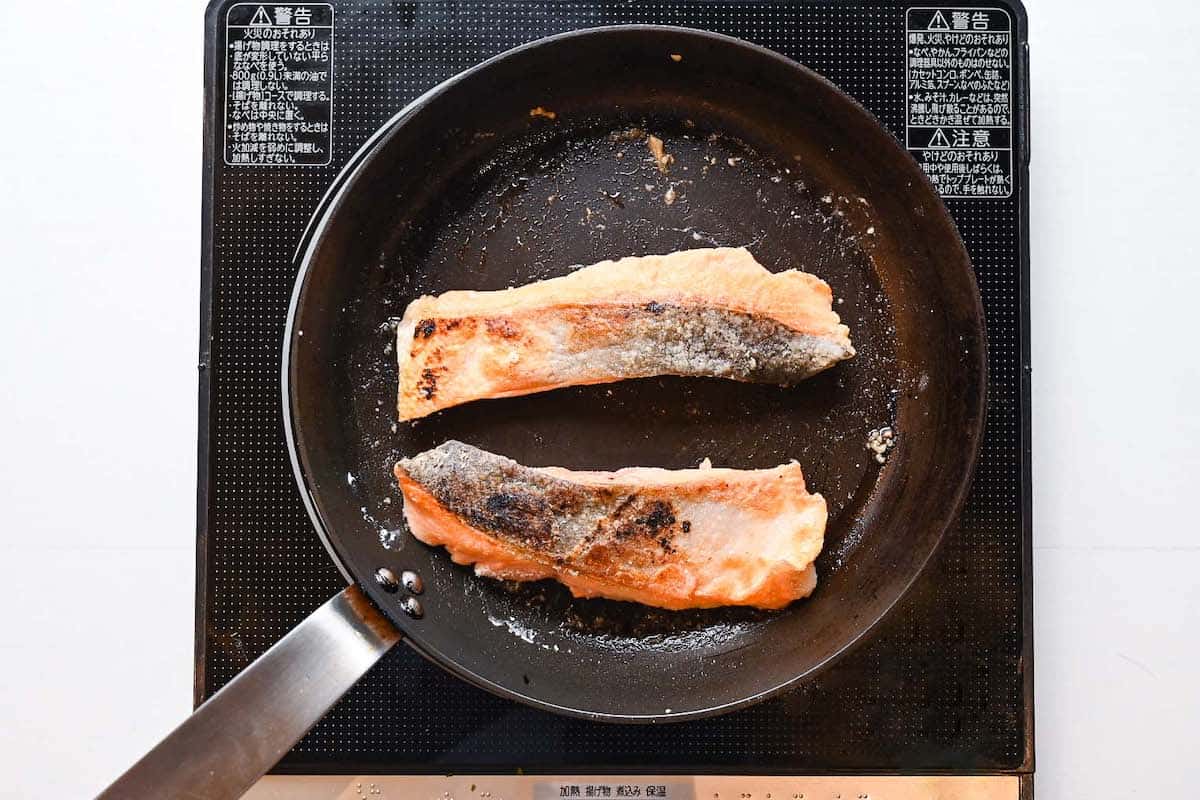
Salmon continues to cook even after it’s taken off the heat; this is why it’s better to cook it to a temperature of 52°C (125°F) to avoid it becoming dry and overcooked. You can use a kitchen thermometer for accuracy.
Once the salmon is cooked through, turn off the heat and pour the miso glaze into the pan. Move the salmon around until it is completely coated in the sauce.
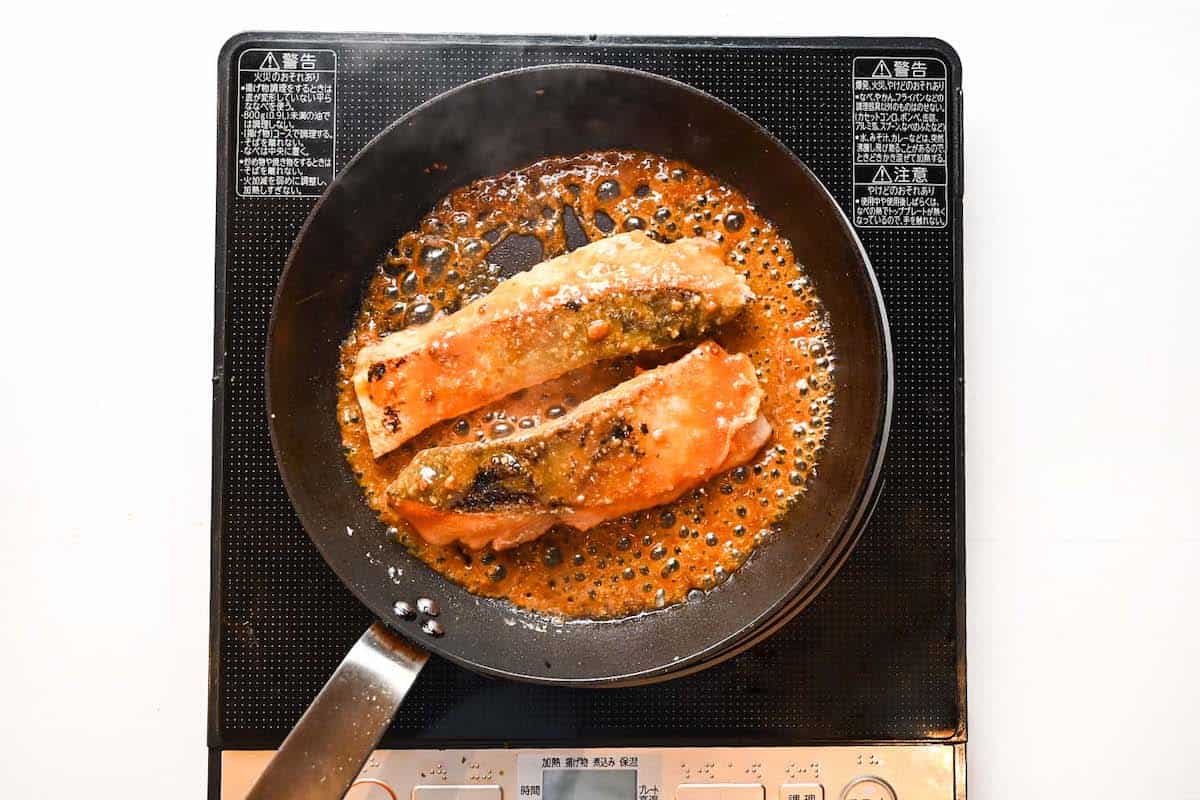
Miso paste easily burns, so it’s better not to cook it with direct heat. Instead, turn off the stove and allow it to bubble and thicken with the residual heat. You’ll find it thickens surprisingly fast!
Plate up, sprinkle with chopped spring onions and enjoy! I recommend serving miso glazed salmon as part of a teishoku set with steamed rice, miso soup, and pickles. See below for more serving suggestions!

